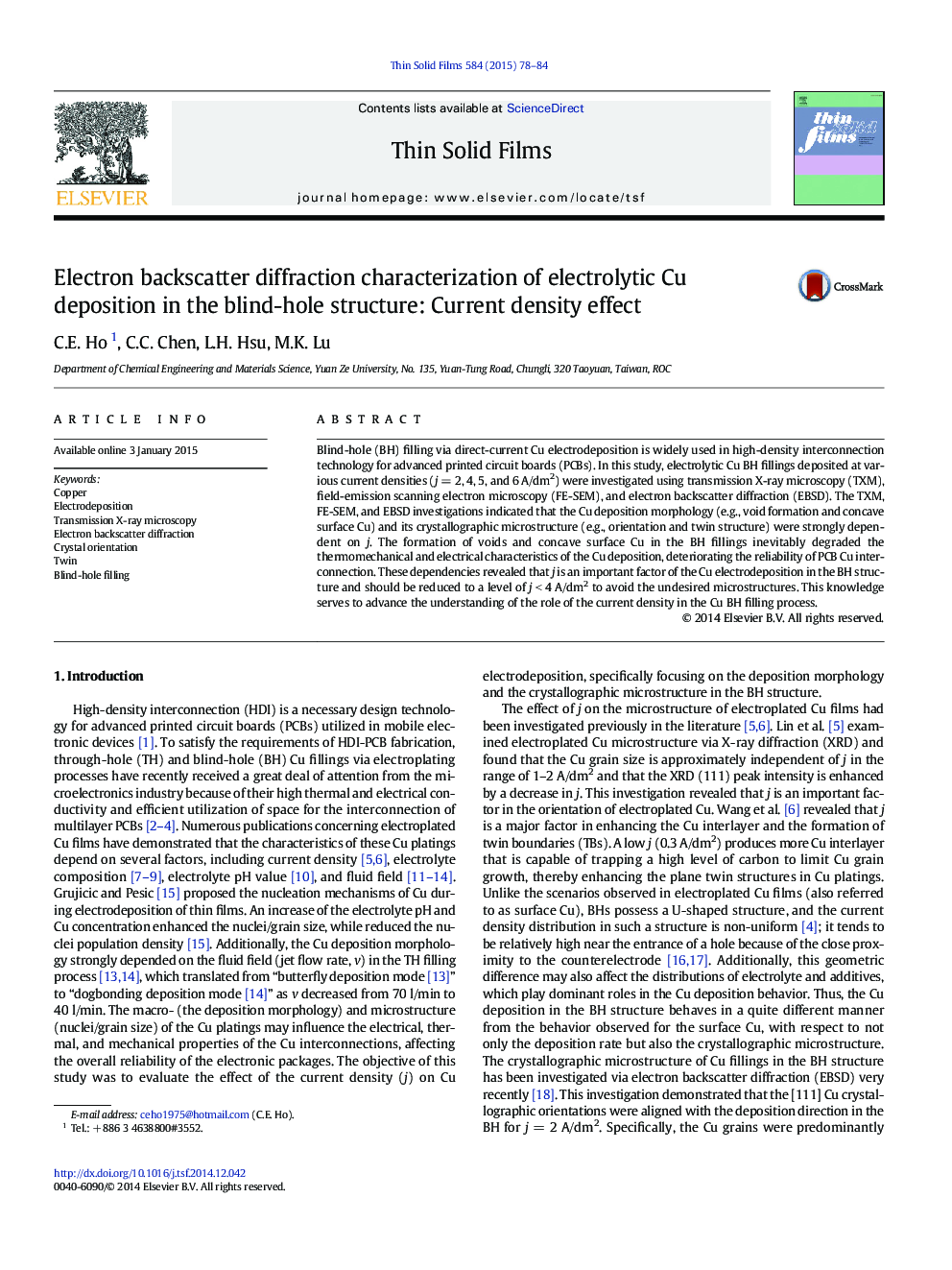| Article ID | Journal | Published Year | Pages | File Type |
|---|---|---|---|---|
| 1664828 | Thin Solid Films | 2015 | 7 Pages |
•Pronounced effect of current density (j) on Cu blind-hole (BH) filling•High-current-density induced void formation in the BH structure.•Concave Cu surface was caused in a high-j electrodeposition process.•Crystallographic transition of the [111] Cu to [101] was induced by increasing j.•Formation of Cu twin structure (60° rotation at 〈111〉) strongly depended on j.
Blind-hole (BH) filling via direct-current Cu electrodeposition is widely used in high-density interconnection technology for advanced printed circuit boards (PCBs). In this study, electrolytic Cu BH fillings deposited at various current densities (j = 2, 4, 5, and 6 A/dm2) were investigated using transmission X-ray microscopy (TXM), field-emission scanning electron microscopy (FE-SEM), and electron backscatter diffraction (EBSD). The TXM, FE-SEM, and EBSD investigations indicated that the Cu deposition morphology (e.g., void formation and concave surface Cu) and its crystallographic microstructure (e.g., orientation and twin structure) were strongly dependent on j. The formation of voids and concave surface Cu in the BH fillings inevitably degraded the thermomechanical and electrical characteristics of the Cu deposition, deteriorating the reliability of PCB Cu interconnection. These dependencies revealed that j is an important factor of the Cu electrodeposition in the BH structure and should be reduced to a level of j < 4 A/dm2 to avoid the undesired microstructures. This knowledge serves to advance the understanding of the role of the current density in the Cu BH filling process.
